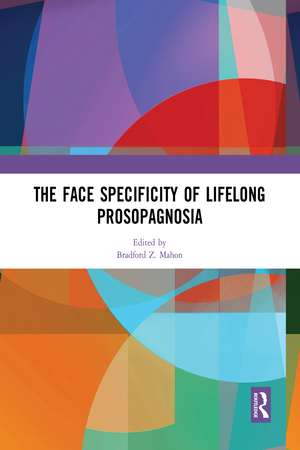The Face Specificity of Lifelong Prosopagnosia
Editat de Bradford Z. Mahonen Limba Engleză Paperback – 30 iun 2020
| Toate formatele și edițiile | Preț | Express |
|---|---|---|
| Paperback (1) | 178.76 lei 6-8 săpt. | |
| Taylor & Francis – 30 iun 2020 | 178.76 lei 6-8 săpt. | |
| Hardback (1) | 496.94 lei 6-8 săpt. | |
| Taylor & Francis – 30 oct 2018 | 496.94 lei 6-8 săpt. |
Preț: 178.76 lei
Preț vechi: 215.73 lei
-17% Nou
Puncte Express: 268
Preț estimativ în valută:
34.21€ • 36.58$ • 28.52£
34.21€ • 36.58$ • 28.52£
Carte tipărită la comandă
Livrare economică 17 aprilie-01 mai
Preluare comenzi: 021 569.72.76
Specificații
ISBN-13: 9780367583859
ISBN-10: 0367583852
Pagini: 126
Dimensiuni: 219 x 276 x 22 mm
Greutate: 0.45 kg
Ediția:1
Editura: Taylor & Francis
Colecția Routledge
Locul publicării:Oxford, United Kingdom
ISBN-10: 0367583852
Pagini: 126
Dimensiuni: 219 x 276 x 22 mm
Greutate: 0.45 kg
Ediția:1
Editura: Taylor & Francis
Colecția Routledge
Locul publicării:Oxford, United Kingdom
Public țintă
Postgraduate, Professional, and UndergraduateCuprins
Introduction: The face specificity of lifelong prosopagnosia 1. Congenital prosopagnosia without object agnosia? A literature review 2. Association vs dissociation and setting appropriate criteria for object agnosia 3. Should developmental prosopagnosia, developmental body agnosia, and developmental object agnosia be considered independent neurodevelopmental conditions? 4. Decoupling category level and perceptual similarity in congenital prosopagnosia 5. On defining and interpreting dissociations 6. Commonly associated face and object recognition impairments have implications for the cognitive architecture 7. A possible neuronal account for the behavioural heterogeneity in congenital prosopagnosia 8. Congenital prosopagnosia: Deficit diagnosis and beyond 9. What do associations and dissociations between face and object recognition abilities tell us about the domain-generality of face processing? 10. The power of how—lessons learned from neuropsychology and face processing 11. Face specificity of developmental prosopagnosia, moving beyond the debate on face specificity 12. Objects and faces, faces and objects…. 13. On the use of cognitive neuropsychological methods in developmental disorders 14. Prosopdysgnosia? What could it tell us about the neural organization of face and object recognition? 15. Over time, the right results will emerge
Notă biografică
Bradford Z. Mahon is based at Carnegie Mellon University, USA.
Descriere
Lifelong prosopagnosia has emerged as a key testing ground for theories of visual system organization, as well as the development and the emergence of neural specificity in the human brain. A key open issue concerns whether individuals who have lifelong prosopagnosia also experience difficulty with recognizing non-face stimuli. This volume featu
